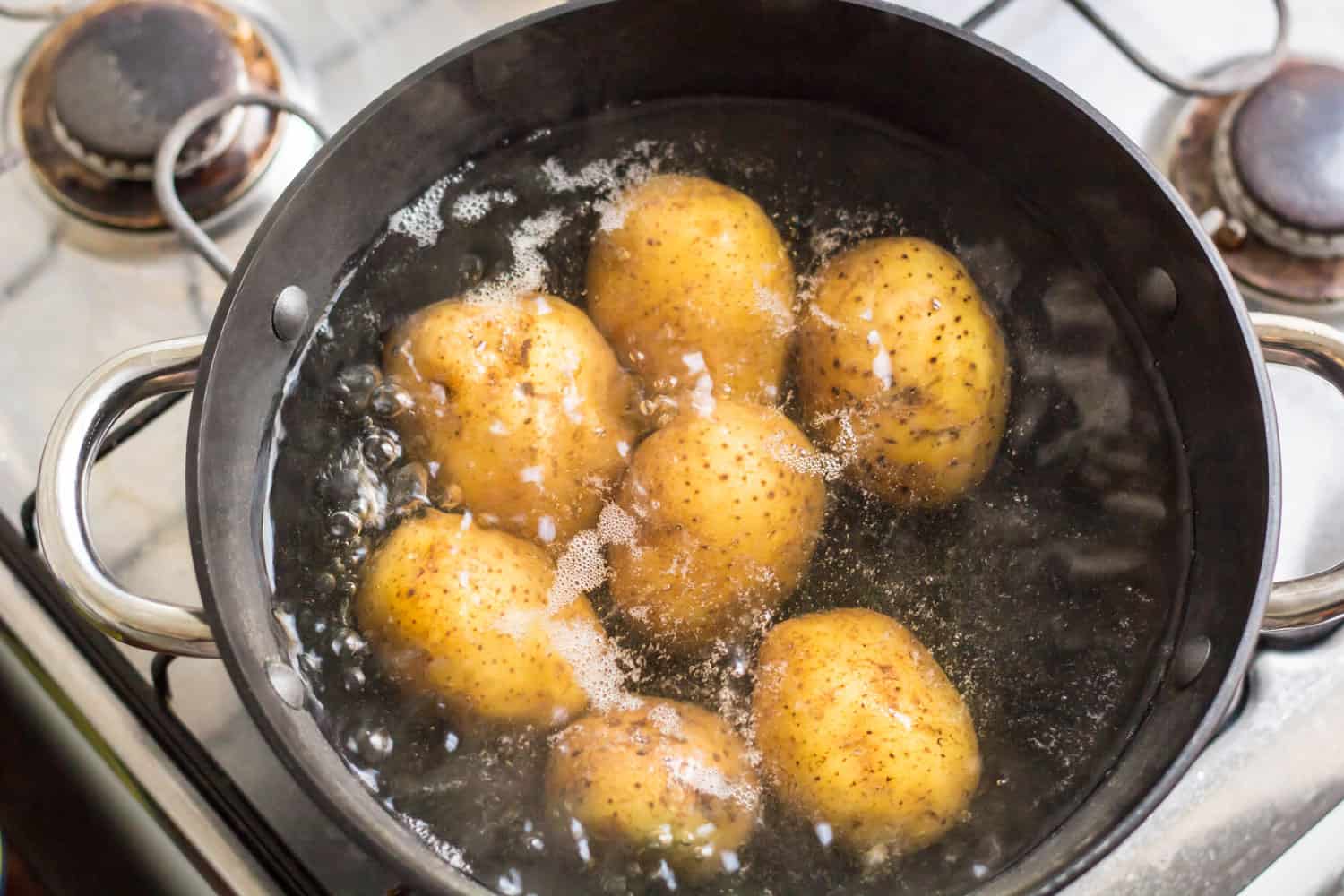Have you come across recipes that require frying rice before cooking? Do you often wonder why you should fry rice before cooking when you can just boil it?
While I was reading a few recipes, I found a unique rice preparation method known as the pilaf method. In this cooking style, you must fry and sauté the rice grains with oil and various spices before boiling them.
There are several benefits of frying rice before cooking. It allows you to improve the rice’s texture, preventing it from getting sticky. You can infuse the rice with unique flavors by frying it in flavored oils like olive or coconut. Lastly, frying helps to cut down the boiling time.
Sautéing rice before cooking helps to toast the grains, enhancing their nutty flavor and preventing them from becoming mushy during the cooking process. It also creates a firm outer layer that helps the rice maintain its shape and texture.

Add Extra Flavors
Apart from the toasted flavor, frying your rice in oil lets you infuse extra flavors.
Instead of using vegetable oil, use olive oil to add fruity notes to your rice.
Alternatively, I love using coconut oil to sauté my rice grains when I’m in the mood to have a seafood-based side dish! Similarly, you can experiment with the flavors that you want.
You can add spices like cardamom, bay leaves, cinnamon, or cloves to make the rice more aromatic and flavorful.
I like to play around with oils that have distinct flavor profiles, like sesame oil or coconut oil, in order to add even greater character to the toasted rice. For about 1 cup of rice (to 2 cups of liquid), you’ll want roughly one tablespoon of olive oil, coconut oil, avocado oil, or sesame seed oil. Heat your oil of choice over medium-high heat, then add the rice and get to toasting. The aroma of the toasted rice will soon fill your kitchen and you will start to see the color change, at which point, you know it’s time for liquid. Stir in the water (or other cooking liquid), along with salt and a bit of butter for extra richness. As the mixture starts to boil, cover the pot and turn the heat to a low simmer. I tend to wait just about the full 20 minutes to check on my (white) rice, and try to not disturb it at any cost. When you open the pot too many times or too soon, all of your precious steam that cooks the rice to fluffy perfection escapes (we need all the steam, people). If some of the grains are not fully cooked, I simply top the pot off with a splash more water, cover, and turn the heat off to let the steam finish cooking the rice. (Turning off the heat prevents the rice from scorching to the bottom of the pot when it only needs a few more minutes to steam.)
Just like pasta, I tend to have a bag of rice on hand at all times. When I can’t think of anything else for dinner, I throw on a pot of rice and hope inspiration strikes for the the remaining half of my meal as I rummage through the refrigerator. It’s the perfect conduit for gravy, roasted vegetables, and/or a dressed-up can of beans. I’ve had many nights with rice, seasoned black beans, and lemon-pepper chicken. It’s a usual go-to meal, when I don’t really feel like cooking—or at least putting much thought into cooking. It’s an easy standby, that goes with just about any flavor profile. Within 20 minutes, (or 40 minutes for brown rice), I have a fluffy pot of incredibly versatile, starchy goodness. If I am feeling creative, I’ll toss in some chopped scallions or minced garlic, and maybe stir in coconut milk or chicken stock in place of half of the water.
Now you have a pot of richly flavored, gloriously fluffed rice… it is a blank canvas for creativity. Dress it up with lemon, lime, or orange zest and while you’re at it, toss in some dried herbs. I love using dried herbs such as thyme, oregano, sage, and rosemary because these strong aromatics release oils and flavor when mixed with the hot rice. I am also not opposed to folding in freshly diced tomatoes depending on what my rice is destined to be served with. Point being, rice, while often underrated, is so worth having a little fun with. And starting your next pot off on the right foot—i.e. toasting the uncooked grains to release their full flavor potential—is the best place to start.
That said, in all of my rice cooking, I have found that one particular (and super simple) trick yields a far more fragrant and flavorful pot of rice—without the use of any additional ingredients. Typically, you bring a pot of water to a boil, salt it, and then add the rice, right? OK, I start the process a little backwards and cook my rice in oil first before it even touches the water. I borrowed this cooking technique from rice pilaf, a style of rice cooked in a seasoned broth, and applied it to my regular, everyday white rice… and it’s made all the difference. Rice pilaf traditionally calls to brown or toast rice in cooking fat prior to adding the water or broth. Toasting the rice until it browns ever so slightly gives it an incredible rich and nutty flavor. And bonus, when you add the cooking liquid in, it comes to a boil more quickly because the rice is already hot.
Eight guidelines to prepare the rice before making fried rice
FAQ
Do you fry rice before or after boiling?
Why do Mexicans fry their rice before cooking?
Should you fry rice in oil before adding water?
Is rice boiled before frying?
